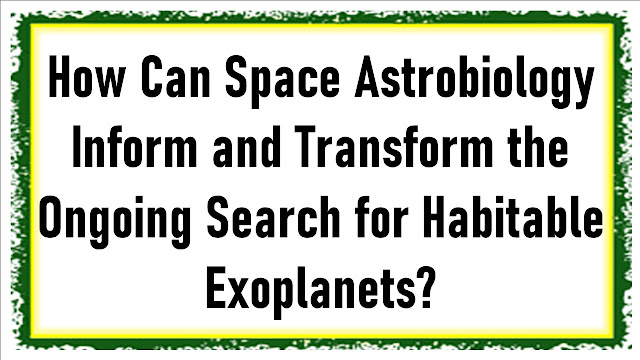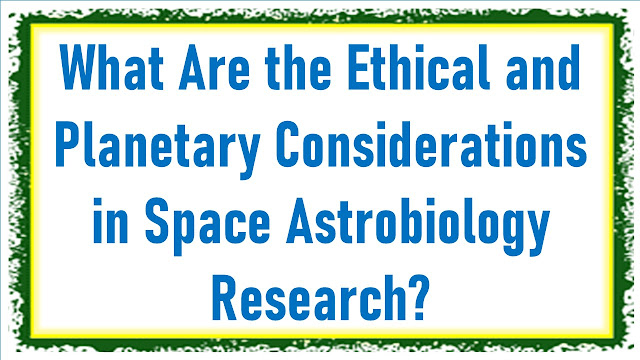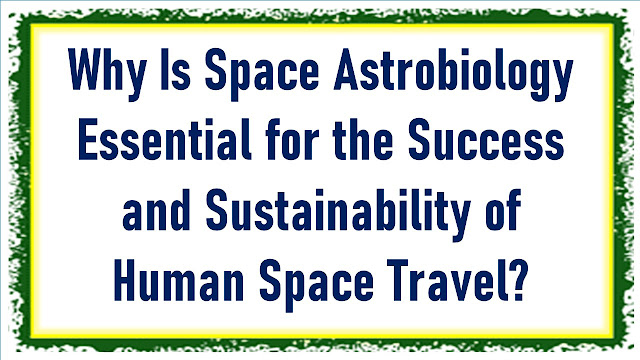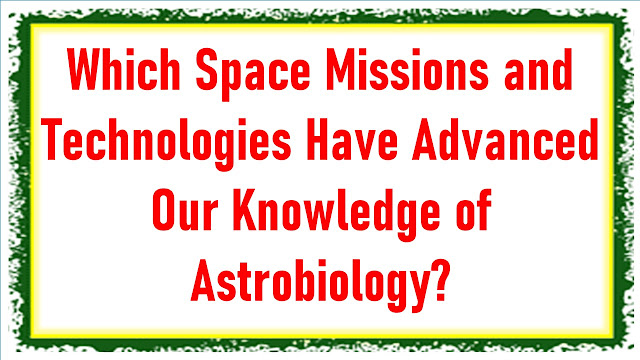
Introduction.
In this article, I’ll delve into the fascinating realm of space astrobiology and its pivotal role in shaping our understanding and progress in space exploration. The quest for extraterrestrial life has long captured the imagination of scientists and the public alike, igniting a passion for unraveling the mysteries of the cosmos. Space astrobiology, a multidisciplinary field at the intersection of astronomy, biology, chemistry, and planetary science, plays a vital role in this cosmic exploration. By examining the potential for life beyond Earth and studying extremophiles on our own planet, astrobiologists provide critical insights into the habitability of celestial bodies, informing the strategies and technologies essential for future missions to Mars, Europa, Enceladus, and other celestial destinations.
Moreover, the study of space astrobiology is not just an academic endeavor; it is the foundation upon which our ambitions for space colonization and interstellar travel rest. Understanding the requirements for life’s existence in the cosmos, the unique challenges of different planetary environments, and the potential for indigenous life on other worlds is essential for developing sustainable habitats and propulsion systems for future deep space missions. As we venture farther into the universe, the lessons learned from space astrobiology become increasingly invaluable, guiding our efforts to unlock the secrets of the universe and expand humanity’s presence among the stars.
- Origins of life: Tracing cosmic clues for life’s beginnings.
- Extremophiles: Insights into resilient life on Earth and beyond.
- Planetary habitability: Assessing potential life-supporting environments in space.
- Astrobiology technology: Innovations for space exploration and life detection.
- Search for extraterrestrial life: Strategies and missions exploring alien realms.
- Implications for human exploration: Lessons from astrobiology for future missions.
Origins of life: Tracing cosmic clues for life’s beginnings.
Space astrobiology plays a crucial role in unraveling the mysteries surrounding the origins of life. By examining cosmic clues, such as the chemical composition of comets, meteorites, and interstellar dust, scientists gain valuable insights into the conditions and processes that might have kickstarted life on Earth and potentially elsewhere in the universe. This knowledge helps us understand the fundamental building blocks of life, including amino acids and organic molecules, which have been discovered in various space environments.
Additionally, space missions like the Mars rovers and the study of extreme environments on Earth, such as hydrothermal vents and acidic lakes, offer clues about the potential habitats for life beyond our planet. These investigations shed light on how life might have emerged in harsh conditions and thrive in extreme environments, expanding our understanding of where and how life could exist in the cosmos.
Understanding the origins of life is fundamental to space exploration because it informs our search for habitable planets and the development of life-detection instruments. By studying cosmic clues and the conditions necessary for life’s emergence, space astrobiology provides a solid foundation for identifying potential life-supporting environments on other celestial bodies, making it an indispensable part of our quest to explore the universe.
Extremophiles: Insights into resilient life on Earth and beyond.
Extremophiles, microorganisms that thrive in extreme conditions on Earth, offer valuable insights into the resilience of life and its potential existence in the harsh environments of space. Space astrobiology studies extremophiles to understand how life can adapt and persist in conditions that were once thought to be inhospitable, such as high radiation, extreme cold, or extreme heat.
By studying extremophiles, scientists gain a deeper understanding of the limits of life and the mechanisms by which organisms can survive and reproduce in extreme settings. This knowledge is essential for space exploration because it helps us identify potential niches for life on other celestial bodies, like Mars or icy moons, and design instruments and missions capable of detecting such life forms.
Moreover, extremophiles offer insights into the possibilities of panspermia, the idea that life could be transported between planets or even between star systems on meteorites or other cosmic bodies. Understanding the resilience of extremophiles informs our theories about the potential spread of life throughout the universe, further emphasizing the significance of space astrobiology in advancing our understanding of space exploration.
Planetary habitability: Assessing potential life-supporting environments in space.
Space astrobiology contributes to space exploration by helping us assess the habitability of celestial bodies beyond Earth. Through the study of extremophiles, Earth’s extreme environments, and the search for analogs on other planets, scientists can identify conditions that might support life as we know it.
This assessment is vital for planning and executing space missions. For example, understanding the habitability of Mars informs the design of rovers and landers, ensuring they are equipped to search for signs of past or present life. Similarly, identifying potential subsurface oceans on moons like Europa or Enceladus expands our search for extraterrestrial life beyond traditional planetary surfaces.
Furthermore, space astrobiology plays a role in the search for exoplanets in the habitable zone of distant stars. By studying the atmospheres and chemical compositions of these exoplanets, astrobiologists can determine whether they might offer conditions suitable for life, guiding future missions to study these distant worlds.
Astrobiology technology: Innovations for space exploration and life detection.
Space astrobiology drives technological innovation in space exploration. To search for signs of life beyond Earth, scientists and engineers develop cutting-edge instruments and technologies. These innovations not only enable us to explore and understand our own planet’s extremophiles and unique ecosystems but also enhance our capabilities to detect life on other celestial bodies.
For instance, the development of sophisticated spectrometers and biosensors allows us to analyze the chemical compositions of extraterrestrial environments and detect organic molecules, which could be indicative of past or present life. Furthermore, advancements in robotics and artificial intelligence are crucial for autonomous exploration of distant planets and moons, reducing the risks associated with manned missions and improving our chances of discovering signs of life.
Additionally, astrobiology technology has implications for Earth-based applications. Technologies developed for space exploration often find use in environmental monitoring, healthcare, and other fields, leading to advancements that benefit humanity beyond the scope of space missions.
Search for extraterrestrial life: Strategies and missions exploring alien realms.
The search for extraterrestrial life is at the core of space astrobiology’s contribution to space exploration. Scientists and space agencies worldwide design missions and strategies specifically aimed at exploring alien environments where life could potentially exist. For example, missions like the Mars rovers (e.g., Curiosity and Perseverance) are equipped with a suite of instruments designed to analyze the Martian terrain for signs of past or present microbial life. These missions represent significant investments in space exploration driven by astrobiological objectives.
Similarly, upcoming missions to moons like Europa and Titan will explore subsurface oceans and methane lakes, respectively, in the quest to discover microbial life or complex organic chemistry. These missions exemplify the critical role that space astrobiology plays in shaping the goals and priorities of space agencies worldwide.
Furthermore, space astrobiology influences the development of planetary protection protocols to prevent contamination of extraterrestrial environments with Earth microbes, ensuring that our search for alien life is conducted responsibly and without interference.
Implications for human exploration: Lessons from astrobiology for future missions.
Space astrobiology offers valuable lessons for human exploration beyond Earth. As we prepare for future crewed missions to destinations like Mars, understanding the potential for life, even in microbial forms, is crucial. Astrobiology informs our approach to planetary protection, ensuring that human activities do not inadvertently harm indigenous ecosystems and maintaining the scientific integrity of potential life-detection efforts.
Furthermore, astrobiology research helps us design life support systems and habitats that can sustain human life in the harsh environments of space and on other celestial bodies. By studying extremophiles and ecosystems on Earth, scientists gain insights into how to create closed-loop systems that recycle resources and support long-duration space missions.
Additionally, the study of astrobiology motivates the development of advanced life-detection and contamination-monitoring technologies for use in future human missions. These technologies will be vital for ensuring the safety of astronauts and the integrity of scientific experiments conducted on other worlds.
Conclusion.
I hope this discussion has shed light on the critical role that space astrobiology plays in advancing our understanding and pursuit of space exploration. In conclusion, space astrobiology serves as a foundational science, guiding our search for extraterrestrial life and habitable environments beyond Earth. By studying extremophiles on our planet and their potential counterparts elsewhere, we gain insights into the adaptability of life in the cosmos, informing the design of missions and the selection of target locations.
Furthermore, space astrobiology fosters interdisciplinary collaboration among scientists, engineers, and researchers, driving innovation in space technology, instrumentation, and mission planning. As we continue to unravel the mysteries of life’s potential existence beyond Earth, the knowledge gleaned from astrobiological research promises to shape the future of space exploration, guiding our efforts to not only explore distant worlds but also to safeguard our own planet by understanding the unique conditions that support life in the universe. In this way, space astrobiology stands as a pivotal discipline, linking scientific curiosity with the practicalities of interstellar exploration, offering a brighter future for humanity’s endeavors in space.










